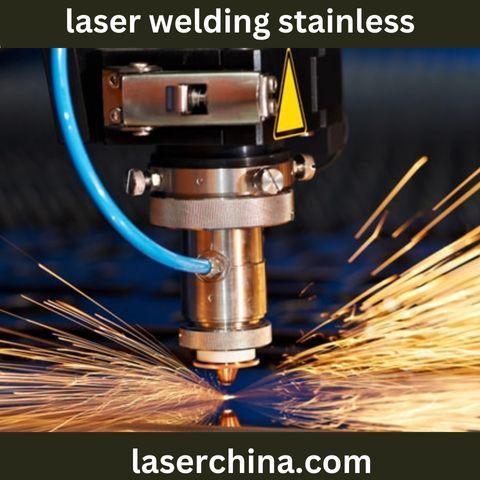Laser Welding Stainless: Precision Techniques and Applications for Modern Metal Fabrication

Laser welding stainless steel has emerged as a transformative process in modern metal fabrication, offering precise control over the joining of metals while maintaining structural integrity. Unlike conventional welding methods, laser welding leverages a highly concentrated beam of light to fuse stainless steel surfaces at a microscopic level, ensuring a seamless and robust joint. The process has gained traction across industries due to its ability to handle complex geometries, thin materials, and high-quality finishes with minimal post-processing.
At its core, laser welding stainless steel relies on the principle of photothermal interaction. The laser emits a coherent, high-intensity light that is absorbed by the metal surface, rapidly raising the temperature to a level where the metal melts and fuses. The resulting weld is narrow, deep, and precise, minimizing heat-affected zones that could compromise the surrounding material. This precision is particularly valuable when working with stainless steel, a material known for its corrosion resistance and aesthetic appeal, where maintaining surface quality is critical.
The applications of laser welding stainless steel span multiple sectors. In the automotive industry, manufacturers use it to assemble exhaust systems, fuel tanks, and intricate components where precision and strength are essential. The electronics industry leverages laser welding for small-scale components like battery casings, connectors, and sensors, where traditional welding methods could damage delicate parts. Even in medical device manufacturing, laser welding stainless steel ensures sterile, high-precision joints for surgical instruments, implants, and diagnostic equipment. Each of these applications highlights the versatility and adaptability of laser welding to different production requirements.
Laser welding stainless steel also allows for the joining of dissimilar metals and alloys. In certain applications, combining stainless steel with other metals such as nickel or aluminum can enhance performance characteristics like thermal resistance or electrical conductivity. The precise nature of the laser beam facilitates controlled melting and fusion, reducing the risk of defects such as cracks, porosity, or incomplete fusion that can occur with traditional welding techniques. This capability broadens the potential for innovative designs and materials in engineering and manufacturing.
From an operational perspective, laser welding stainless steel involves several key parameters that must be carefully managed. Beam intensity, focus, welding speed, and shielding gas all play crucial roles in achieving a high-quality weld. For instance, the correct choice of shielding gas, often argon or helium, prevents oxidation and ensures a smooth surface finish. The process can be automated using robotic systems or CNC machines, enabling high repeatability, consistent quality, and increased production efficiency. Advanced monitoring systems, including real-time imaging and thermal sensors, further enhance control over the welding process.
The sustainability of laser welding stainless steel is also noteworthy. Because the process is highly efficient, it consumes less energy compared to traditional welding methods while producing minimal waste. The reduced need for filler materials, grinding, or polishing contributes to lower material consumption and less environmental impact. Manufacturers increasingly prioritize these sustainable practices to align with regulatory standards and corporate social responsibility goals.
Furthermore, laser welding stainless steel supports innovations in design and engineering. Its ability to create narrow, precise welds without distorting the base material allows designers to explore complex shapes, lightweight structures, and high-performance assemblies that would be challenging to achieve otherwise. This flexibility has made laser welding a preferred method in industries such as aerospace, where structural integrity, weight reduction, and aerodynamic efficiency are critical.
As technology continues to advance, laser welding stainless steel is becoming more accessible to small- and medium-sized enterprises. Compact laser systems, user-friendly interfaces, and integration with CAD/CAM software enable manufacturers to implement high-precision welding in-house, reducing dependency on external suppliers. This shift empowers businesses to maintain tighter control over quality, turnaround time, and customization, fostering innovation across different sectors.
Training and skill development are also key aspects of implementing laser welding successfully. Operators and engineers must understand the interaction between the laser beam and stainless steel, including the effects of material thickness, joint design, and thermal conductivity. Knowledge of safety protocols, particularly eye protection and laser handling, is essential to ensure workplace safety. As more industries adopt laser welding, specialized training programs and certifications are emerging to equip professionals with the necessary expertise.
In summary, laser welding stainless steel represents a convergence of precision, efficiency, and versatility in metal fabrication. Its applications span automotive, electronics, medical devices, aerospace, and beyond, enabling the creation of durable, high-quality components. The process allows for innovative designs, supports sustainable practices, and enhances production efficiency through automation and real-time control. As technology continues to evolve, laser welding is poised to become a standard practice for industries seeking unmatched precision and reliability in stainless steel fabrication.
Final Thoughts
Laser welding stainless steel is not merely a welding technique—it is a gateway to innovation in modern manufacturing. By combining precision, efficiency, and adaptability, this process transforms the possibilities for designers, engineers, and manufacturers, setting new standards for quality, performance, and sustainability in stainless steel production.
- Art
- Causes
- Crafts
- Dance
- Drinks
- Film
- Fitness
- Food
- Oyunlar
- Gardening
- Health
- Home
- Literature
- Music
- Networking
- Other
- Party
- Religion
- Shopping
- Sports
- Theater
- Wellness




